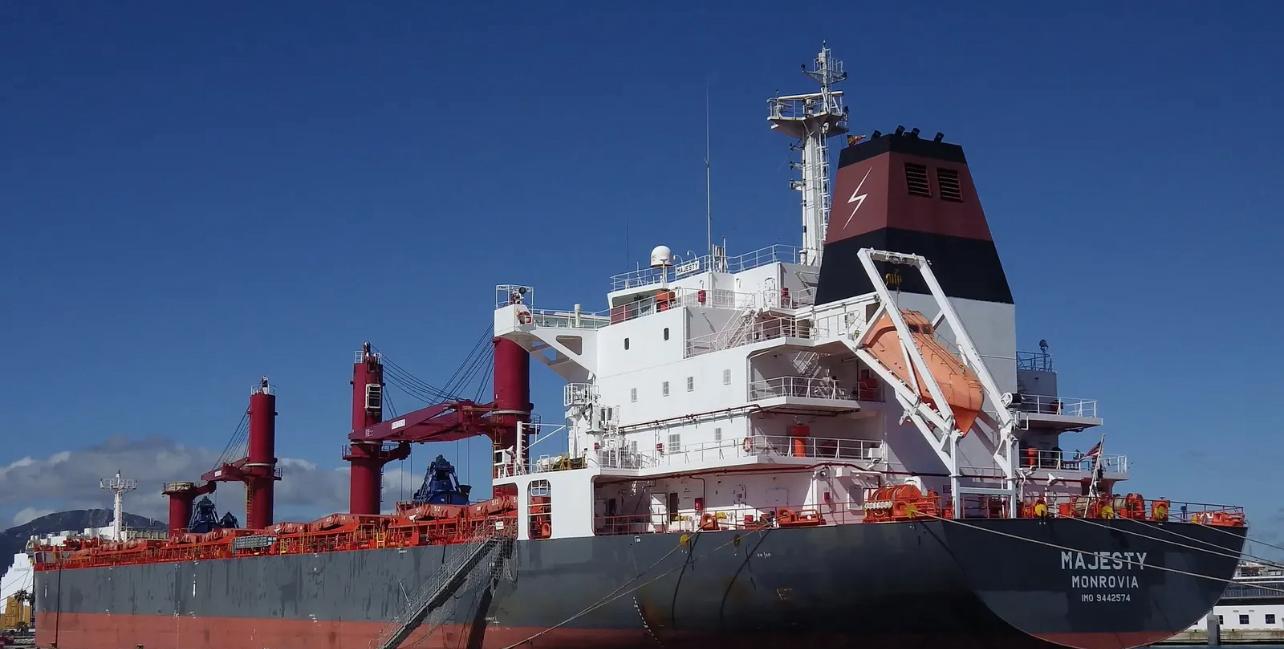Precision at Sea: Rigging and Structural Operations on the Majesty Monrovia
A Focused Overview of Marine Rigging, Mechanical Inspections, and Vessel Maintenance Interventions
The images and context suggest that various types of rigging repairs are being conducted, possibly including replacement or adjustment of mooring lines, lifting gear, and cargo handling systems. Typical rigging work begins with a thorough evaluation of the condition of existing fittings—this includes inspecting shackles, pulleys, hoists, and wire ropes for signs of corrosion, fatigue, or deformation. If rigging elements are found to be compromised, technicians replace them with certified marine-grade components. Proper tensioning and rebalancing of systems is done using calibrated load cells and hydraulic jacks, restoring optimal load distribution. Crane lines and lifting booms may also be inspected and re-calibrated, particularly if they are used for cargo loading or lifeboat deployment. Deck-mounted winches, capstans, and fairleads often receive cleaning, lubrication, and alignment to avoid hazardous jolts or gear strain. All repairs are conducted in compliance with international safety standards such as SOLAS and ISO norms, ensuring both mechanical fidelity and crew protection.
In more comprehensive rigging operations, structural assessments and deck reinforcement measures are implemented in parallel. Rigging systems exert substantial dynamic forces on a vessel’s deck and structural components, especially in rough seas, making it essential to ensure secure anchor points. Welding and fabrication crews may reinforce bollards and pedestal mounts with new steel plates or gussets to handle updated loading schemes. Re-certification of load-bearing structures typically follows with non-destructive testing (NDT) like dye penetrant inspection or ultrasonic testing, verifying there are no hidden fractures or internal faults. Meanwhile, the rigging paths—cable runs, sheaves, and pulleys—are carefully aligned to eliminate cross-stressing and premature wear. Where applicable, anti-friction liners or bushings are fitted to reduce long-term strain. In highly loaded areas, high-tensile synthetic ropes may be substituted for traditional steel wire to improve flexibility without sacrificing strength. Throughout these operations, specialized crew members such as marine riggers, welders, and class-certified surveyors collaborate to track milestones and document performance metrics. The result is a seamlessly functioning rigging environment, capable of sustaining dynamic maritime operations without compromising safety or reliability.
Following the core rigging enhancements, auxiliary systems are often re-tested to guarantee full vessel operability under normal and emergency conditions. Lifeboat davits and release mechanisms—which depend on fault-free rigging—are cycled repeatedly to verify manual and hydraulic operation. Navigation lights, radio antennas, and signal masts that rely on halyard systems are also inspected for proper elevation and stability. If rigging supports any onboard lifting or crane equipment, those systems are submitted to load trials and brake function tests. These re-certification efforts often require coordination with port authorities or classification societies to ensure compliance. Crews may also update the rigging schematics in the ship’s technical documentation, helping future technicians with reference layouts and safety parameters. Surface finishing such as touch-up painting or coating restoration is typically the final step—protecting exposed rigging components and structural reinforcements from marine corrosion. The deck is then cleaned, and loose equipment is secured to prevent load shift or trip hazards during voyage operations. With these critical elements addressed, the Majesty Monrovia regains its operational readiness—ready once more to navigate, tow, or berth under even the most challenging sea conditions.



























































